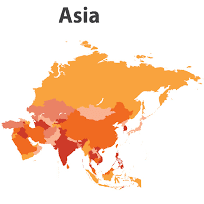Investor attention shifted subtly this morning as a leading chip designer steered regional equities upwards, even as crude futures grappled with fresh policy tensions. The interplay between a technology heavyweight’s momentum and looming trade measures set the stage for a nuanced market reaction.
Asian equity benchmarks opened with a renewed sense of purpose, buoyed by the latest developments from a firm at the forefront of artificial intelligence hardware. Trading desks noted that optimism around advanced graphics processors filtered through to broader indices, with technology and export-oriented sectors benefiting most visibly. In Hong Kong, the benchmark index reclaimed ground after a week of volatility, while Seoul’s market logged one of its more convincing advances in recent sessions. Tokyo, typically more insular amid global trade chatter, added to the sense that investor focus remains tethered to the prospects for generative AI, even as Washington weighs additional levies.
The narrative driving sentiment was straightforward: demand for specialised semiconductors is gathering pace ahead of major cloud-services rollouts, and chipmakers with a proven track record are best positioned to capitalise. Market participants pointed to healthy order backlogs and chatter of new product pipelines as validation that the cycle could extend beyond seasonal norms. This has emboldened fund managers to increase exposure to hardware and software names, underpinned by a belief that incremental gains in processing power will translate into outsized gains for enterprises deploying machine learning at scale.
Yet, alongside this embrace of innovation, a familiar risk factor reasserted itself in commodity markets. Oil prices, which briefly flirted with a multi-month high last week, retreated as commentary out of the United States reignited fears of escalating trade hostilities. Suggestions that fresh tariffs might target energy imports prompted a swift reassessment of supply-demand balances. Futures contracts for key benchmarks settled notably lower, marking their steepest one-day slip in weeks. For investors, this underscored the delicate balance between geopolitical manoeuvring and the underlying fundamentals of a market still navigating post-pandemic consumption patterns.
Crucially, the divergence between equity gains and commodity retreats highlights an evolving risk-reward calculus. While technology firms bask in the glow of a digital transformation wave, energy producers face the prospect of margin pressure should import costs rise or demand dampen. Portfolio strategists are recalibrating allocations accordingly, favouring sectors where earnings visibility remains high and growth trajectories appear less vulnerable to policy shifts. In contrast, energy allocations have been trimmed, with many preferring exposure to integrated names rather than pure-play producers, to mitigate the cost-pass-through risk.
Currency markets reflected this duality. Regional trade-linked units held firm against the greenback, supported by optimism in offshore demand and the belief that any further tightening measures abroad will be moderated by solid domestic economic data. By contrast, commodity currencies exhibited sensitivity to the tumble in crude, with the Australian dollar underperforming peers as traders contemplated the impact on national export revenues. These moves underscore how policy pronouncements can ripple through asset classes, altering hedging considerations and cross-border flows.
Looking ahead, investors will be watching corporate earnings for confirmation that the chip-driven rally has substance beyond hype. Several major hardware providers are due to report in the coming weeks, and any guidance around capital-spend intentions will be scrutinised for signs of sustained momentum. At the same time, energy market participants remain on edge, monitoring Washington for further tariff signals and assessing how producers might respond through output adjustments. These twin narratives suggest that while one corner of the market dazzles with technological promise, another wrestles with the familiar rhythms of supply, demand and policy.
Against this backdrop, asset-allocation committees face a balancing act: how to embrace the potential of next-generation computing without underestimating the impact of rising trade frictions on the broader economy. For investors with a long-term horizon, selectively adding exposure to hardware leaders could capture valuable upside, provided risks in rate-sensitive and commodity-linked sectors are managed carefully. The current market tableau thus offers both opportunity and caution, reminding market participants that innovation and regulation often advance in tandem.
Fidelity Asian Values Plc (LON:FAS) provides shareholders with a differentiated equity exposure to Asian Markets. Asia is the world’s fastest-growing economic region and the trust looks to capitalise on this by finding good businesses, run by good people and buying them at a good price.











































